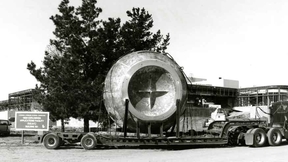Back
Ana Racoveanu is able to do something most others throughout the nuclear security enterprise cannot do — something challenging and extremely valuable throughout the complex. Racoveanu, a staff scientist in Lawrence Livermore National Laboratory’s Materials Science Division, is able to synthesize energetic compounds with isotopic labels. The primary goal of this work is to…
Craig Tarver, a Lawrence Livermore National Laboratory (LLNL) retiree and consultant to the Lab’s Energetic Materials Center, has been honored with the American Physical Society’s (APS) 2021 George E. Duvall Shock Compression Science Award for “theoretical advancement of the understanding of shock-driven reactions and detonation in condensed phase explosives.” Since 1987,…
The first-ever shot to study a high explosive sample was recently conducted at the National Ignition Facility (NIF), the world’s most energetic laser. The results from the shot included novel data that will help researchers unlock the mysteries of high-explosive (HE) chemistry and position Lawrence Livermore National Laboratory (LLNL) to continue its legacy as a leader in…
This year, Lawrence Livermore National Laboratory's (LLNL) High Explosives Applications Facility (HEAF) celebrates a milestone - 25 years as a center of excellence for the research, development, synthesis, formulation and characterization of explosives. The creation of HEAF stemmed from the recognition that the high explosives (HE) facilities at the Lab were old and…
The High Explosives Applications Facility (HEAF) has activated an additional, higher velocity research gun to be used for shock physics research. Such guns are used to study the behavior of materials under sudden high pressure and temperatures.The new gas gun, which utilizes two stages, can launch a projectile to velocities of 8,000 meters/second. (In comparison, a typical…









